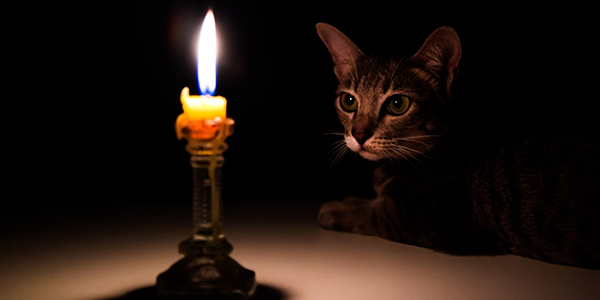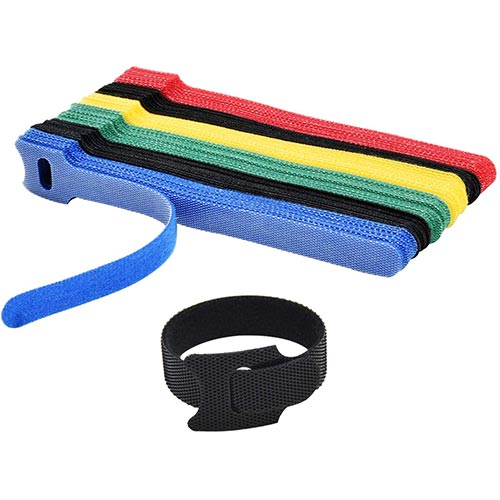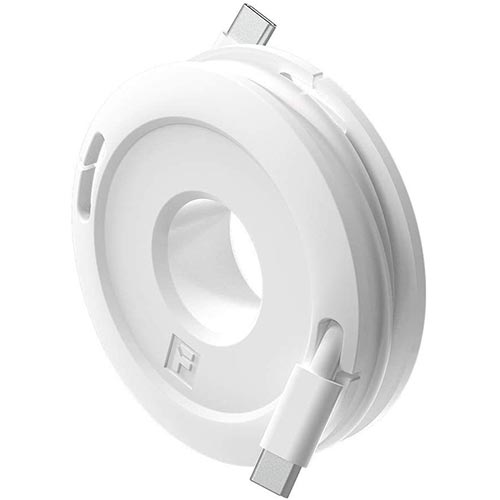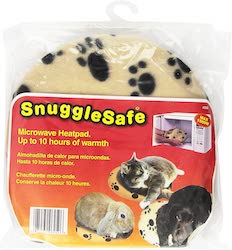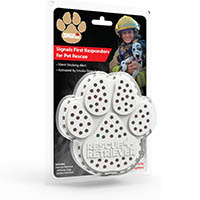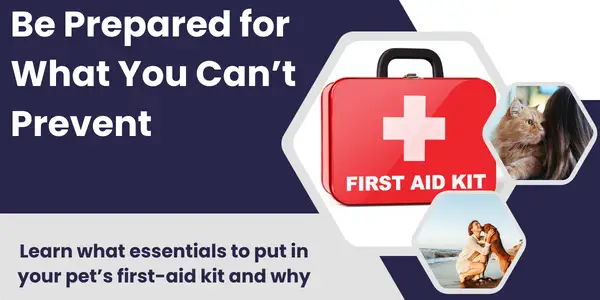We think about protecting our pets from dangers like fire. But do we think enough about preventing our pets from starting fires?
It’s so much more common than you think. And it doesn’t take much.
Pets Starting Fires
A dog in Washington pulled his bed up against a space heater. The bed (then home) ignited into a large blaze, sending both dog and owner to the hospital.
That same week, a black Lab in Connecticut jumped up on a gas stove to snag a slice of pizza (see video below). While committing his caper, he turned the stove knob on and caught the pizza box on fire – setting the kitchen ablaze.
And a few months before all this, a cat in Maryland knocked a couple of candles off a bedroom shelf, and onto the mattress. The house (seen below) was mostly destroyed, but thankfully, no one was seriously hurt.
Most recently, a Colorado family was very lucky to have suffered minimal damage after their dog accidentally turned their stove on and ignited some cardboard boxes sitting on top of it.
Household pets are responsible for over 1,000 house fires each year in the United States*
I’ve personally watched my cat jump from one counter to another, hitting a stove knob in the process and turning it on. (I know he shouldn’t be up there. We’re working on it.)
And with all the digital stoves and ovens out there, a medium-sized dog on their hind legs, a big dog with a wet boopin’ nose, or a limber cat can easily bump the buttons and turn something on.
This isn’t meant to scare you. But it is meant to make a point. If we don’t take precautions around the home, it can be pretty easy for our pets to start fires.
Property damage aside, it's been reported that at minimum 40,000 pets die each year in house fires* (often due to smoke inhalation), so being aware and taking the necessary precautions to prevent these tragedies is vital.
*Source: National Fire Protection Association
Pet Fire Safety Tips: Pet-Proofing Your home
Pets and Electrical Cords
They’re everywhere! Appliances, TVs, computers, charging our phones, in the kitchen, next to the bed, on the bathroom counter — you can hardly take a step these days without tripping over an electrical cord.
It’s one of the easiest things your dog or cat can get to and one of the most dangerous. Whether they want something to chew for fun or to calm their nerves, hope for a good game of tug, or want to grab your attention, there’s nothing about an electrical cord that says, “Hey dog, you cat, don’t mess with me!” Quite the opposite.
It only takes one bite for a dog or cat to break the coating on the cord. Now they risk electrocution and starting a fire if the cord is plugged in.
Pets and Electrocution
As much as our pets like to chew, you can imagine electrocution is a serious problem. It can range from minor electrical burns to the unthinkable. Weak electrical currents for your pet may only feel like the discomfort that we feel when we experience static build-up. But they can also cause burns that go beyond just what you may see in your pet’s mouth.
These currents can spread through the tissues of the body and cause your pet to overheat. Sadly, most owners are not aware of the extent of the damage until several days following the incident.
During this time, the damaged tissue is dying and forming ulcers. Ulcers can become infected, resulting in pain, and if present in the mouth, a foul odor is often noticed.
When your pet experiences a severe shock, they risk damage to the lungs, heart, gastrointestinal tract, and brain. Twitching, muscle spasm, and convulsions can be caused by strong voltages.
There are times when these motions are so strong that they can damage the tendons and ligaments and, in some cases, cause bone fractures.
When electrical shock damages the lungs, the lungs can fill with fluid (pulmonary edema). This accumulation of fluid can make it difficult for your pet to breathe. This is a life-threatening situation. Pulmonary edema may occur quickly, or it can take a couple of days to develop.
Your pet’s normal heartbeat can be disrupted, leading to arrhythmias (this is when the heart rhythm is abnormal). When arrhythmias occur, your pet may collapse or, even worse, suffer cardiac arrest. When the shock is severe, there is the risk of brain damage and even death.
What you can do to protect the electrical cords around your home and keep your pets safe from electrocution.
Roll up excess cord length so there’s less of it for your pet to get ahold of. Zip ties and Velcro ties work perfectly.
For things like cell phone and tablet chargers, you can try handy wrappers like these.
Tuck cords behind solid furniture like bookcases and entertainment centers when possible. Be careful tucking under and behind furniture. Your pets can also get under and behind the couch. They could be back there chewing away, and you might not even realize it.
There are tons of cord covers and protectors on the market. Whether you want something you can stick to the wall and paint so it blends in, runs along the baseboards, or attach to the back of furniture, there’s something for every situation.
If you’re looking for a budget-friendly option that provides a lot of length, consider split corrugated tubing meant for wiring. It comes in various widths, lengths, and colors and won’t break the bank if you need to protect a home full of cords.
Here's a quick video showing you how I covered my electrical cords using the Electriduct Tubing:
Bitter sprays are available at most pet supply stores. These leave behind an unpleasant taste meant to keep your dog or cat at bay. Be aware, some pets don’t seem to mind them all that much.
And you must reapply regularly, or they lose their effectiveness. And, of course, be careful with sprays around the plug and electrical outlet. Spray onto a cloth and then rub the cords, versus spraying directly onto the cord itself.
Before you create a cozy sleeping spot for your dog or set up a new feeding station for your cat, take a look at the area. If you have electrical cords nearby, hanging, or running along the floor, it might not be the best location for a pet zone.

Pets and Candles
I, for one, am thrilled we seem to be leaving the world of open-flame candles to find ourselves more safely in a land of battery-powered flameless candles. They may not have the same ambiance. But I’ll take a little less flickering light if it means I don’t have to worry about forgetting to blow it out, accidentally placing it too close to something flammable, or my cat strolling by and knocking it over or catching his tail on fire. These flameless candle designs look better every year.
If you’re not convinced and still prefer an open-flame candle, consider keeping them in large hurricane lamps with heavy bases. This way, the flame is protected with glass, and the heavy base makes for a sturdier setup.
Keep your candles as far away from pet access as possible. And position them on surfaces that are less likely to catch fire quickly if knocked over. Keep them away from and off of fabrics, paper products, liquids that might be flammable, etc.
And don't forget about those lit jack-o'-lanterns at Halloween!
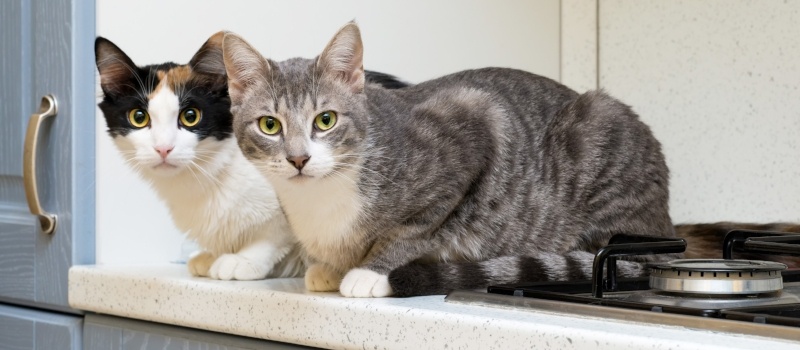
Pets, Fireplaces, and Wood Stoves
Heavy pet screens are a must if you don’t have glass doors on your fireplace or stove. In fact, even with glass doors, a curious pet can still get a wicked nose or paw pad burn. We like to think our dogs and cats are smart enough to avoid large fires like these. Better safe than sorry, I say.
A rowdy game of fetch can take a bad turn if the ball gets too close or lands in the fireplace. An accidental brush of the tail can cause a burn. It’s not worth the risk. Use pet-safe screens or doors, and do what you can to keep your pets at a safe distance from fireplaces and stoves.
Thermal burns are caused by indirect heat, so are a risk to your pets when they are resting nearby fireplaces. They can result in superficial trauma where only the outermost layer of skin is affected. Typically these types of burns are red and painful with no evidence of injury. They will heal within a few days with minimal care.
But some thermal burns can result in second-degree burns causing blistering and drainage. They often get infected and require veterinary care, and generally take a couple of weeks to heal.
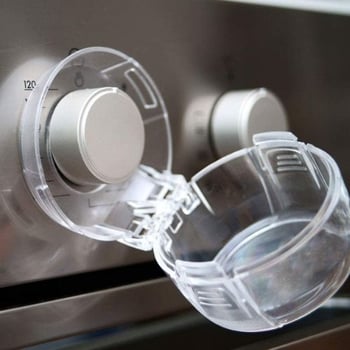
Pets, Stoves, and Ovens
Sometimes the same things you might use for babyproofing work for pet-proofing. That’s the case when it comes to the kitchen. Knob covers are a simple way to keep our wily pets from accidentally hitting a knob and turning on the stove burner.
If you have an electric stove, those things heat up in seconds. And if you have a gas stove, you risk your pet starting the gas flowing from the burner, which is a fire hazard and toxicity hazard. As an added bonus, knob covers also keep the knobs clean.
If you have a digital oven, it probably comes with a child safety lock feature that locks the door and makes it impossible to turn the oven on. Use it for pets too. All it takes is a paw pad to hit the preheat button. That’s not a concern if the safety lock is on.
Electric Blankets and Pet Safety
They may be cozy. But a cat with sharp claws can damage an electric blanket just by walking on it or making happy muffins. Some dogs and cats chew or suck on blankets. And, of course, there’s that pesky electrical cord that needs protecting.
Multiple fire hazards with this one. As much as we love them, it might just be safer to forgo the electric blanket for a super fluffy fleece option everyone can snuggle in safely.
If you want to use an electric blanket for your senior dog or cat, this option is safest, as it heats up in the microwave and doesn't have a cord. It's used a lot in veterinary hospitals.
Baseboard, Wall, and Portable Heater Dangers for Pets
In some areas, baseboards and wall heaters are common. With any of these, keep everything pet-related out of the area. Whether it’s a dog bed nearby that moves around during a raucous wrestling match, or a big basket of cat toys knocked over when your cat dives in, headfirst, for their favorite catnip mouse, there’s a risk of fire if they get too close.
Keep pets and pet stuff as far away from these heaters as possible. If you’re installing new heaters, look for pet-safe models with exterior casings that don’t get too hot.
Everyone knows the dangers of portable heaters. Multiply that by 10x if you have a dog or cat. I get a little anxious just thinking about it. Only use models that stay relatively cool to the touch. Make sure they have an automatic shut-off safety feature in case they’re knocked over by you or a pet. Protect that cord. And stay close. Don’t leave the room if you have a portable heater going.
I may sound like an overly cautious, slightly paranoid pet mom. O.K. I happily accept that title. Hopefully, my overactive nerves will help keep you, your home, and your furry family members safe from accidental fires at the hands of … I mean paws of … our pets.
Batteries & Fires
In addition to being an unhealthy part of your pet’s diet, batteries can also pose a risk of fire to your household.
Here's a little-known hazard associated with 9-volt batteries. This video news story demonstrates how quickly a fire can start when batteries aren't stored properly.
And see what happened to Dave's house (Dave is in the news story, too). He had pets at home, but they got them out in time. Luckily every family member was safe.
BATTERY DISPOSAL TIP: Put electrical tape over the ends of old batteries before storing them (prior to proper disposal). At Preventive Vet, do it for all our batteries!
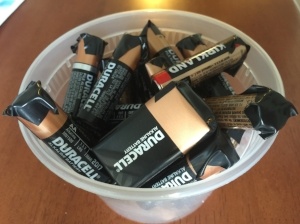
Thanks to having a doggy door, a family in Oklahoma was very lucky to have had all of their animals survive after one of their dogs chewed on a lithium battery which ignited a fire. The scary ordeal was captured on video below!
You don't have to be a firefighter to save a pet's life
You do, however, need to be like a Boy Scout … Prepared! That's why I encourage you all to take a pet first aid course and check out this video on how to give CPR.
Because smoke inhalation is what most pets suffer from and succumb to in fires, having firefighters equipped with the necessary equipment is crucial in saving lives.
If you want to help provide life-saving pet oxygen masks to fire departments and other first responders, I encourage you to learn more about (and consider donating to) the Wag’N O2 Fur Life program.
As an added level of preparedness in case of a fire emergency for animals who are crated when left at home, Rescue Retriever produces a silent strobing alert when it detects smoke and was created for search and rescue teams to be able to easily find pets in their crates.
And if you needed more proof or a great "pick-me-up," here are a few stories about the great work firefighters do, and the benefits of pet oxygen masks:
- South Carolina Firefighters Save Cat From House Fire
- Shepherdstown Firefighters Rescue And Transport Dog
- Addison Firefighter Saves Dog By Performing CPR
Extra Fire Safety Tips & Precautions
Make sure your house is fully equipped with smoke and carbon monoxide detectors. Replace the batteries twice a year. According to Consumer Reports, you should replace detectors at least every 10 years as the sensors become less effective over time.
Have an emergency plan. Involve ALL members of your family – including pets. Then rehearse your plan every year. The National Fire Protection Association has a free emergency planning guide with a grid to map out your escape route.
Have an updated emergency kit. Makes sure the needs of all family members (human and pet) are included. Things to think about for your pet’s needs include a leash or harness, water, a blanket or bed, a week’s supply of food, a toy or something to chew on, poop bags, and any medications needed, as well as a copy of their medical records.
Kits should be stored in a place that you can easily reach during a quick exit from the home. Make sure the retrieval of your kit is part of your emergency plan. You can download our free emergency preparedness kit here.
Keep the phone number and address of your nearest emergency animal hospital on your phone. Also, have a current photo of your pet – just in case you get separated from them.
Pick up a pet alert sticker for your front door. This helps inform rescuers and first responders that pets are in the home. ASPCA has a free sticker you can order.
And please make sure to remove it when you move. It's not ideal that it remains on a door or window of a home that no longer has pets.


